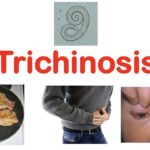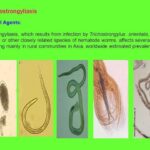Trichomoniasis is a widespread sexually transmitted infection (STI) caused by the protozoan parasite Trichomonas vaginalis. This flagellated protozoan primarily infects the urogenital tract, leading to symptoms that can range from mild to severe or remain asymptomatic, complicating timely diagnosis and treatment. Understanding the disease’s epidemiology, clinical features, diagnostic protocols, and management strategies is essential for effective control and patient care.

Etiology and Transmission of Trichomoniasis
Trichomonas vaginalis is an anaerobic, motile protozoan transmitted almost exclusively through sexual contact. Both men and women can harbor the infection, although clinical manifestations vary.
- Transmission: Sexual intercourse is the primary mode. Non-sexual transmission is rare but possible via fomites or during childbirth.
- Reservoirs: Infected individuals often serve as asymptomatic carriers, facilitating spread.
- Infection Sites: In women, the parasite infects the vagina and urethra; in men, it colonizes the urethra and prostate.
Epidemiology and Risk Factors for Trichomoniasis
Trichomoniasis remains one of the most common non-viral STIs worldwide, with higher prevalence in women, particularly those aged 16 to 35. Risk factors include:
- Multiple sexual partners
- Inconsistent condom use
- Co-infection with other STIs
- Lower socioeconomic status and limited access to healthcare
Clinical Presentation: Recognizing Trichomoniasis Symptoms
Symptoms in Women
- Vaginal discharge that is frothy, yellow-green, and malodorous
- Vaginal itching and irritation
- Dysuria (painful urination)
- Dyspareunia (painful intercourse)
- Vaginal erythema and inflammation on examination
- Approximately 50% of infected women are asymptomatic.
Symptoms in Men
- Usually asymptomatic carriers
- Occasionally, urethritis with discharge, burning sensation, or mild discomfort
Diagnostic Approaches for Trichomoniasis
Early and accurate diagnosis is crucial to prevent complications and transmission:
- Microscopic Wet Mount: Direct visualization of motile trichomonads; sensitivity approximately 60-70%.
- Culture: Gold standard with higher sensitivity but longer turnaround time.
- Nucleic Acid Amplification Tests (NAATs): High sensitivity and specificity; increasingly preferred.
- Rapid Antigen Tests: Useful in point-of-care settings but with variable accuracy.
Treatment Protocols for Trichomoniasis
Timely pharmacological intervention effectively eradicates the infection:
- First-line Therapy: Metronidazole or tinidazole, administered orally in a single dose (2 g) or multiple-dose regimens.
- Partner Treatment: Essential to prevent reinfection.
- Treatment Considerations: Metronidazole resistance is uncommon but documented; alternative regimens may be needed in refractory cases.
- Pregnancy: Metronidazole is considered safe during the second and third trimesters; first-trimester use should be cautious.
Complications and Health Implications of Untreated Trichomoniasis
Failure to treat trichomoniasis can result in:
- Increased susceptibility to HIV infection and other STIs
- Pelvic inflammatory disease in women
- Adverse pregnancy outcomes including preterm delivery and low birth weight
- Chronic urethritis in men
Prevention Strategies and Public Health Measures
Effective prevention focuses on behavioral and clinical interventions:
- Consistent and correct condom use
- Regular STI screening in sexually active individuals
- Prompt treatment of infected individuals and their partners
- Public education campaigns highlighting risks and symptoms
Managing Trichomoniasis with Precision and Care
A comprehensive approach to trichomoniasis entails accurate diagnosis, effective treatment, and proactive prevention. Given its high prevalence and potential complications, routine screening and education remain imperative to curb transmission. Coordination of care between healthcare providers and patients ensures optimal outcomes and reduced public health burden.
Frequently Asked Questions:
Q1. Can trichomoniasis be cured?
Yes, with appropriate antibiotic therapy, trichomoniasis can be effectively cured.
Q2. Is trichomoniasis contagious even without symptoms?
Yes, asymptomatic carriers can transmit the infection.
Q3. How soon after treatment is a person no longer infectious?
Usually within 24 hours after starting antibiotics, but abstinence during treatment is advised.
Q4. Can trichomoniasis cause infertility?
While it rarely causes infertility directly, it can increase the risk of other infections that affect fertility.
Q5. Should sexual partners be treated simultaneously?
Yes, treating both partners prevents reinfection.

